The hot stamping foil slitting machine is a key equipment in the packaging, printing and decoration industry, and its core function directly affects the efficiency, precision and material utilization of the hot stamping process. Here's an in-depth breakdown of its core features:
1. High-precision slitting control
• Functional core: Divide the large coil hot stamping foil into narrow rolls of different widths, and the tolerance can be controlled within ±0.05mm.
• Technical support:
◦ Servo drive system: high-response servo motor + encoder feedback is used to ensure that the slitting speed is synchronized with the tension.
◦ Linear guide/ball screw: ensure the linear accuracy of the turret movement and avoid the accumulation of deviations.
◦ Vision correction system (optional): Real-time monitoring of the edge of the foil through the camera, automatic adjustment of the slitting position.
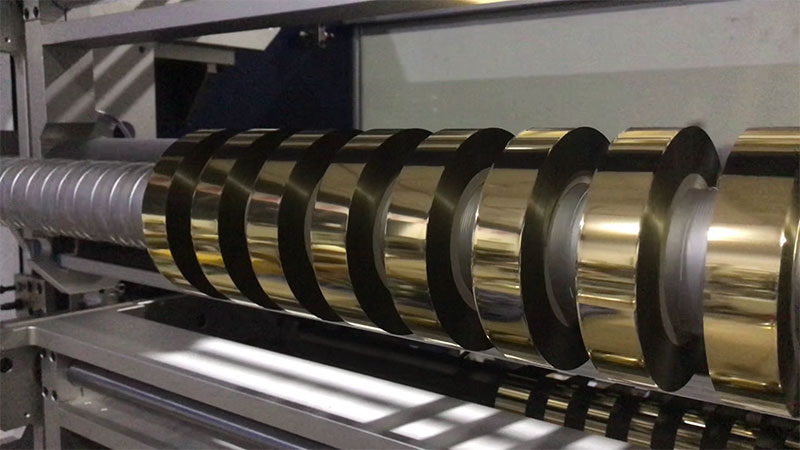
2. Dynamic tension control
• Functional core: Avoid stretching, wrinkling or breaking of the material due to uneven tension during the slitting process.
• Technical implementation:
◦ Closed-loop tension control system: real-time adjustment of unwinding/rewinding torque through magnetic particle brake/inflatable shaft + tension sensor.
◦ Segmented tension management: the unwinding area, slitting area, and winding area are independently controlled to adapt to different material characteristics (such as PET, PVC foil).
◦ Pre-tension setting: Adjust the initial tension parameters for thin foils (12 μm or less) or highly viscous foils.
3. Intelligent cutting system
• Functional core: Balance slitting efficiency with tool life, reducing burrs and delamination.
• Key Technologies:
◦ Round/flat knife selection: Round knife is suitable for high-speed continuous slitting (≤300m/min), and flat knife is used for high-precision intermittent slitting.
◦ Automatic sharpening module (high-end model): Repair the cutting edge of the tool in real time during the slitting process.
◦ Temperature monitoring: Prevent the melting of the foil adhesive layer due to frictional heating during high-speed slitting.
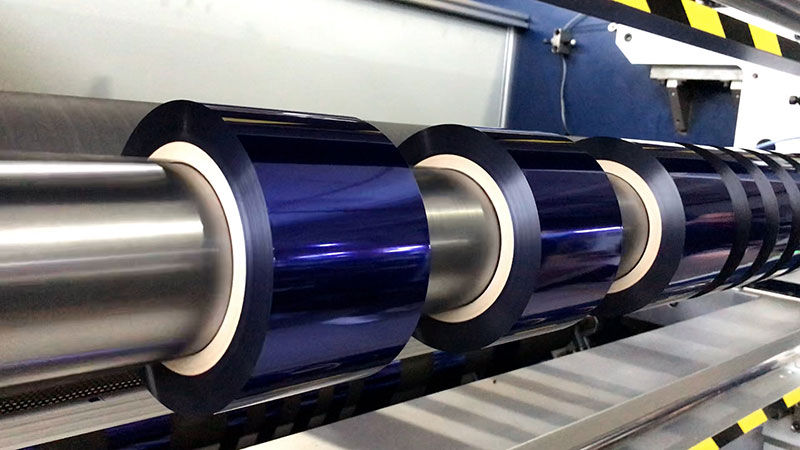
4. Automation and data integration
• Functional Expansion:
◦ Automatic tool change system: Quickly switch the tool combination according to the preset width parameters.
◦ Production management system: record the number of slitting meters, scrap rate and other data, and connect to the MES system.
◦ Intelligent alarm: real-time detection of blade wear, material abnormalities (such as joints passing) and shutdown prompts.
5. Energy efficiency and waste control
• Optimized design:
◦ Pneumatic waste recycling: Slitting edge materials are collected centrally through negative pressure pipelines to reduce manual cleaning.
◦ Energy-saving mode: Automatically reduce the power consumption of the main motor during standby and reduce no-load loss.
◦ Material utilization statistics: The proportion of effective slitting area (up to more than 98%) is calculated by photoelectric sensor.
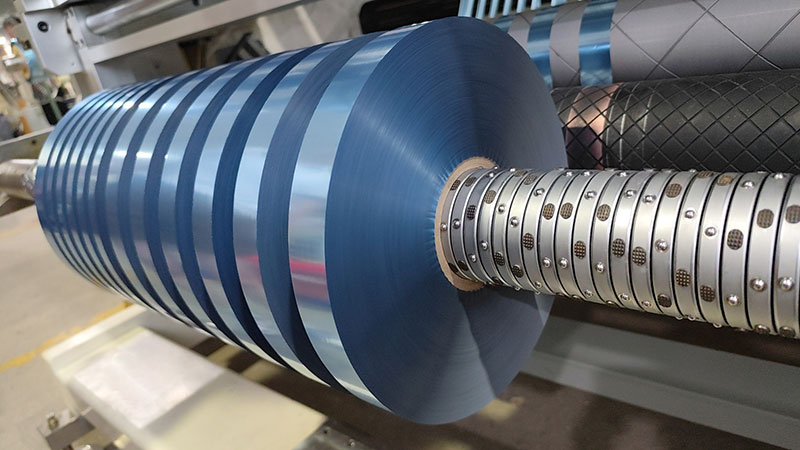
Industry application differences
• Packaging: focus on high-speed slitting (≥200m/min) and narrow multi-lane (such as cigarette pack hot stamping foil slitting).
• Decorative materials: ultra-wide (≥1.5m) or composite foils need to be processed, which requires higher tension control.
Key parameters for model selection
| Parameter items | Standard range | Example of a high-end model |
| Slitting accuracy | ±0.1mm | ±0.02mm |
| Maximum slitting speed | 50-150m/min | 400m/min |
| Applicable foil thickness | 10-50μm | 5-200μm |
| Minimum slitting width | 3mm | 0.5mm |
Through the analysis of the above functions, it can be seen that the modern hot stamping foil slitting machine has shifted from mechanical slitting to mechatronics intelligent equipment, and its core competitiveness lies in precision stability, dynamic response speed and data traceability. Users need to choose the matching configuration according to their own material characteristics (e.g. metal foil breakage) and cycle time needs.
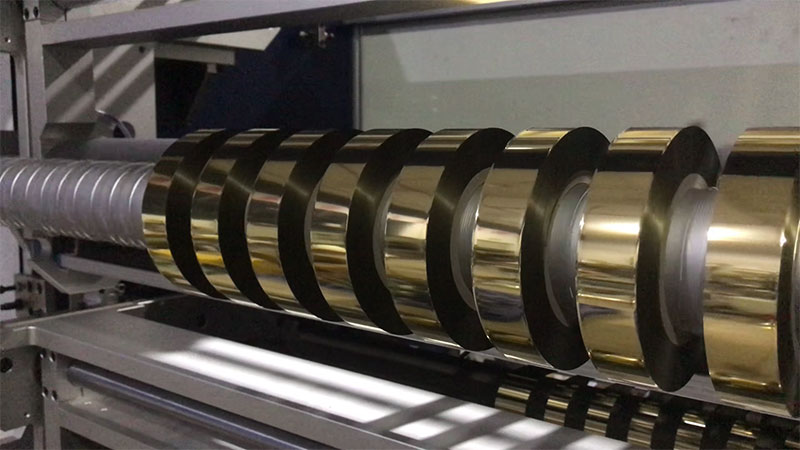 Key points of long-term reliability evaluation of hot stamping foil slitting machine: How to protect investment safety on the blade?
Key points of long-term reliability evaluation of hot stamping foil slitting machine: How to protect investment safety on the blade?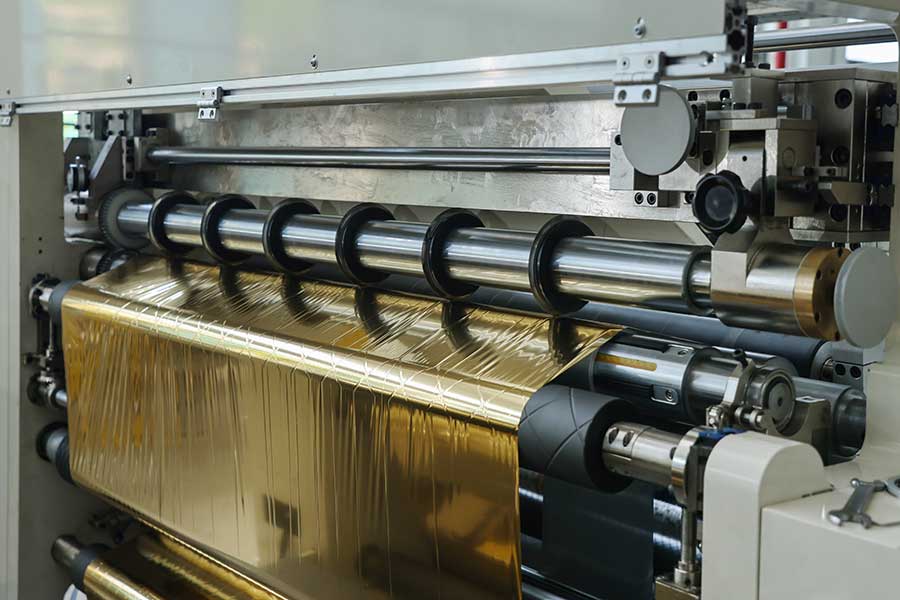 Real user feedback: Reliability challenges and countermeasures in the production of hot stamping foil slitting machines
Real user feedback: Reliability challenges and countermeasures in the production of hot stamping foil slitting machines Simplifying the complex: when the hot stamping foil slitting machine learns to "think"
Simplifying the complex: when the hot stamping foil slitting machine learns to "think"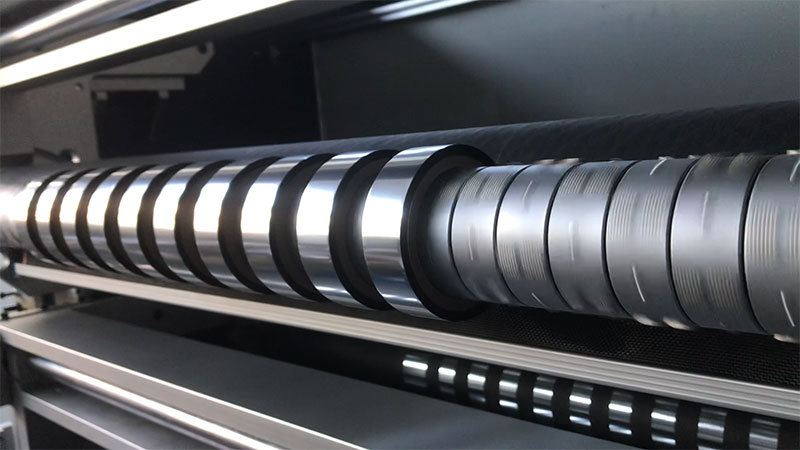 Reduced downtime: Reliability improvement solution for hot stamping foil slitting machines
Reduced downtime: Reliability improvement solution for hot stamping foil slitting machines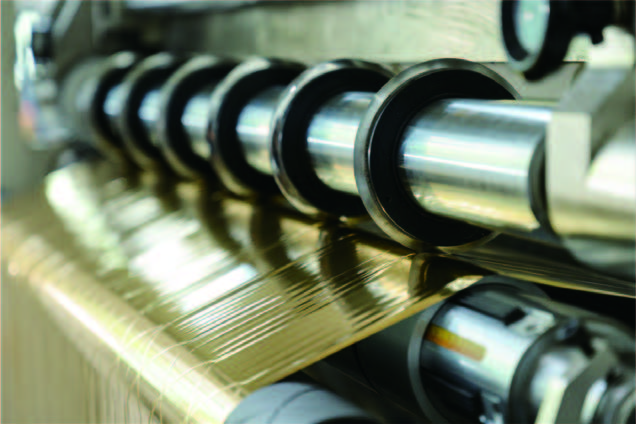 High reliability commitment: Durability testing and guarantee of hot stamping foil slitting machines
High reliability commitment: Durability testing and guarantee of hot stamping foil slitting machines